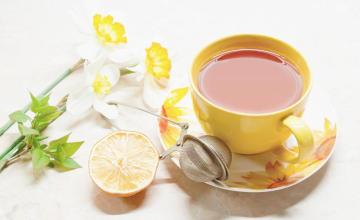A brief introduction to the treatment of Coffee beans-- introduction to the method of tanning Coffee
A brief introduction to the treatment of Coffee beans-- Solar method
Tanning is a traditional method for the initial processing of coffee beans, and at present, almost all coffee-growing countries such as Ethiopia and Yemen still use solarization to treat raw beans.
Sun treatment will first identify sunken beans in the sink, that is, ripe or half-ripe beans are spread in the drying farm for natural drying. The specific time depends on the local climatic conditions, which usually takes two to four weeks. When the moisture of the coffee bean is reduced to 12%, then use a sheller to grind off the hard pulp and silver skin.
The sun treatment has a very high requirement on the climate, and if you encounter a rainy day in the sun, it will make the beans moist and moldy. When drying raw beans in the sun, the color is yellow, and the center will be brown after baking, rather than the white of washed beans. Sun beans have relatively better sweetness and mellow thickness, while less sour taste, but the quality is more unstable, there will be greater fluctuations. Due to the low cost of tanning, it is widely used not only in Ethiopia and Yemen, but also in Robbins grown in Africa and Indonesia.
Yega Xuefei is a small town in Ethiopia at an altitude of 1700-2100 meters above sea level and is also synonymous with Ethiopian fine beans. Since ancient times, it is a piece of wetland in Ethiopia. [Yega] means [settle down]. [Xuefei] means [wetland], so [Yejasuefi] means [let's settle down in this wetland]. Most of Yega Xuefei's beans are washed, but there are also a small number of excellent beans that can be treated in the sun. The cost of sun treatment is much higher than that of water washing treatment, because it takes manual time to constantly turn the red coffee fruit to enhance the attractive fruit aroma and mellow thickness.
Coffee insolation (Coffee Solar treatment) the treatment of sun-baked coffee | A brief introduction to the treatment of coffee beans and raw beans
Yimutian boutique coffee farm in Yunnan.
Flavor introduction: if the washed Yega Chuefei has charming citrus, jasmine, lemon and other fragrances, the entrance of coffee is in full bloom ~ the sun Yega is more like a fruit bomb that explodes after the entrance, bold, wild, fruit-flavored syrup-like sweetness and mellow thickness in addition to its own citrus lemon aroma, blueberry and strawberry wine is amazing! The flavor is really more charming than washing Yega! even people who drink coffee for the first time can taste it directly without sugar or milk.
It is no exaggeration to say that Sun Yega knows her potential as soon as she smells raw or cooked beans.
This batch of Sun Yega got a high score of 90.2 in the SM Cup test.
In order to make it easy to check, I have made a rough translation. Can I read English or take English as the standard?

Important Notice :
前街咖啡 FrontStreet Coffee has moved to new addredd:
FrontStreet Coffee Address: 315,Donghua East Road,GuangZhou
Tel:020 38364473
- Prev

Coffee beans are processed in several ways, which is the best way
Brazilian semi-sun-natural pectin removal: Brazil used to use the sun method in the past, the quality is very poor, so that Brazil Yu is synonymous with medium and low quality. However, in order to improve the quality and reverse the image of the world's largest coffee producing country, the quality revolution was carried out in the 1990s, and the semi-sun method, which is unique in the world, was vigorously promoted. Brazilian coffee fields are endless, mostly harvested mechanically to meet the needs of
- Next

Coffee blending method introduction to the method of blending Italian Coffee
One mismatched recipe goes like this: Colombian coffee, with excellent mellow thickness, sugar sweetness and red cherry flavor, mixed with bright citrus acid, grapefruit, raisin flavor of Kenya Nyeri. Originally separate are excellent coffee, and together Nima each want to be the protagonist, desperately to take each other's life, each good taste by each other
Related
- Beginners will see the "Coffee pull flower" guide!
- What is the difference between ice blog purified milk and ordinary milk coffee?
- Why is the Philippines the largest producer of crops in Liberia?
- For coffee extraction, should the fine powder be retained?
- How does extracted espresso fill pressed powder? How much strength does it take to press the powder?
- How to make jasmine cold extract coffee? Is the jasmine + latte good?
- Will this little toy really make the coffee taste better? How does Lily Drip affect coffee extraction?
- Will the action of slapping the filter cup also affect coffee extraction?
- What's the difference between powder-to-water ratio and powder-to-liquid ratio?
- What is the Ethiopian local species? What does it have to do with Heirloom native species?

